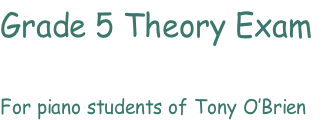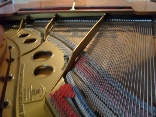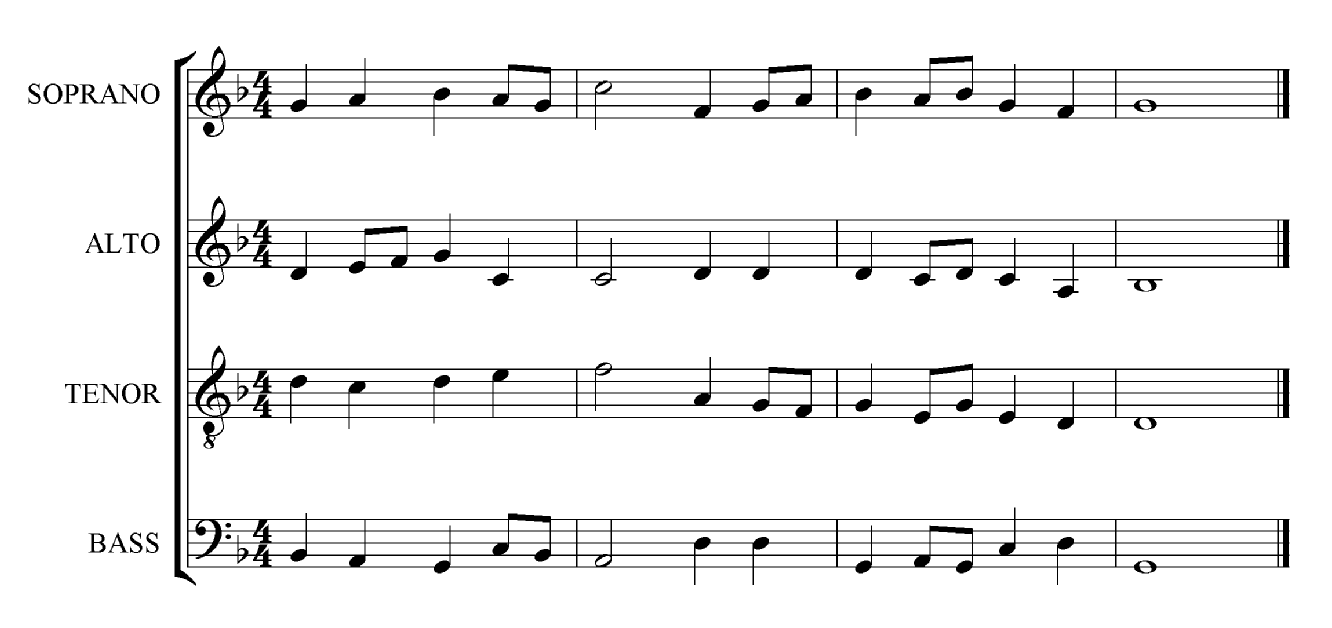If no clefs are given (as here) add them - use the treble clef for the soprano and
alto voices. Use the bass clef for the bass voice.
Use the treble clef with an 8 written underneath if for the tenor voice - this means
read the notes as written for the treble clef but sing them an octave lower.
NEVER, NEVER, NEVER use the alto or tenor clefs for the alto and tenor voices.
Any ideas why the treble clef is used for the tenor voice?

Think of young boys with high voices used to reading treble clef whose voices then
“break” in their early teens.
Don’t forget to add key and time signatures to each staff.
Working systematically down through the voices in the order SATB, simply write each
voice onto its own stave. Stems go “up” if the note is on the mid-line or below
of the stave, and go “down” if on the mid-line or above. (It’s your choice if the
note is on the mid-line). The only voice that is “difficult” is the tenor voice,
since you will need “transpose” its notes up an octave into the treble clef.
 Watch out for co-incident notes - the same note sung at the same time by two voices.
These will have up and down stems in “short score” as with the Tenor and Bass D note
sung on the 4th beat of the 3rd bar. Make sure each voice gets the co-incident note
in “open score”. (In short score co-incident semi-breves are written as two adjacent
semibreves.)
Watch out for co-incident notes - the same note sung at the same time by two voices.
These will have up and down stems in “short score” as with the Tenor and Bass D note
sung on the 4th beat of the 3rd bar. Make sure each voice gets the co-incident note
in “open score”. (In short score co-incident semi-breves are written as two adjacent
semibreves.)






 Watch out for co-
Watch out for co-
